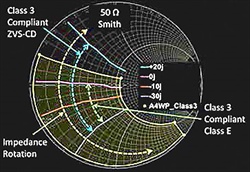Sign up today to get the latest news and updates from EPC on new product announcements, applications work, and much more. Sign up for EPC email updates.
On November 3rd, IEEE PELS will offer a webinar by Alex Lidow and Michael de Rooij discussing the design and PCB manufacturing methods for using chip-scale packaged GaN power devices.
EL SEGUNDO, Calif.— October 2016 — Efficient Power Conversion Corporation (EPC) experts on the design and use of gallium nitride transistors will conduct a one-hour webinar sponsored by the IEEE Power Electronics Society (PELS) on November 3rd from 11:00 AM to 12:00 PM (EDT).
Read more
The latest gallium nitride technology has been propelling the development of wireless power transfer application. This is especially of interest to engineers at the time just after the merger of A4WP and PMA. The interview extensively covers various areas of interests in answering the question of wider adoption of GaN devices by the semiconductor industry including differentiations of GaN devices, lowering of costs, latest device innovations, high-frequency plus small-size device operations, heat management, how GaN’s markets would surpass silicon’s markets and the future development of gallium nitride technology.
Power System Design China
June 24, 2015
Read Article
Read more

eGaN® FETs have previously demonstrated higher efficiency in loosely coupled wireless power transfer solutions when operating on-resonance using either ZVS Class D or Class E amplifiers. Practical Wireless Power systems however need to address the convenience factor of such systems, which results in reflected coil impedances that can significantly deviate from resonance as load and coupling vary. These systems still need to deliver power to the load and hence the amplifier needs to drive the coils over a wide impedance range. Standards such as the A4WP class 3 have defined a broad coil impedance range that address the convenience factor and can be used as a starting point to compare the performance of the amplifiers. In this installment both the ZVS Class D and Class E amplifiers will be tested at 6.78 MHz to the A4WP class 3 standard with a reduced impedance range to determine the inherent operating range limits. Factors such as device temperature and voltage limits will determine the bounds of the load impedance range each amplifier is capable of driving.
Bodos China
June, 2015
Read Article
Read more